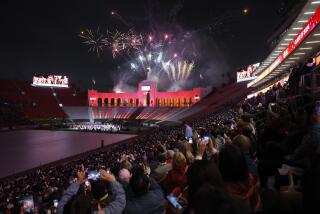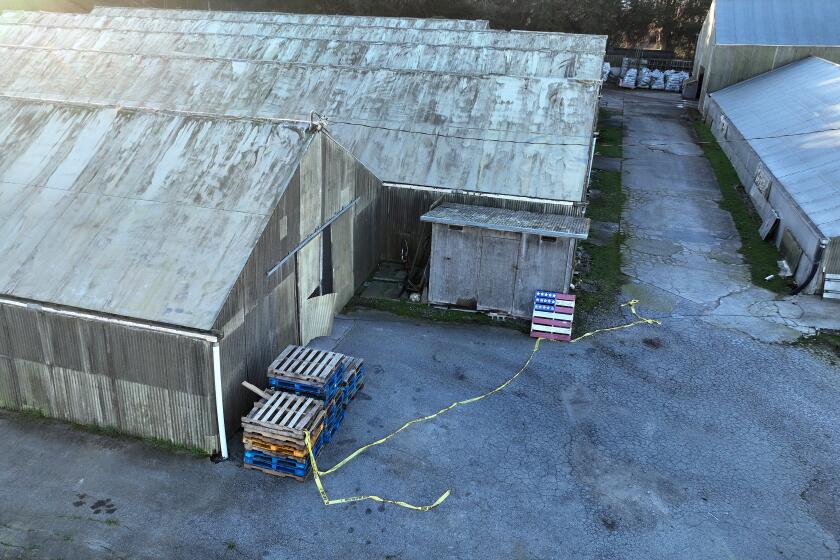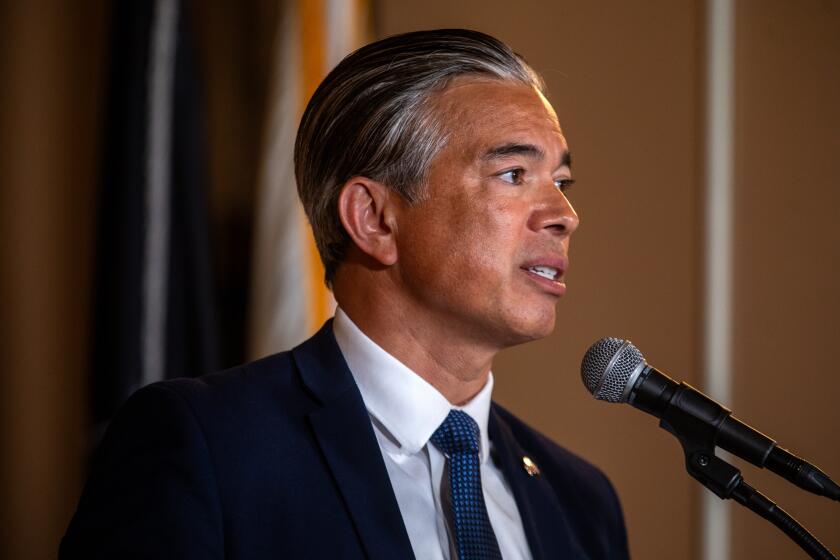SPECIAL REPORT: Oil on the Beach : OIL SPILL CHRONOLOGY
WEDNESDAY, FEB. 7
The tanker American Trader, arriving from Long Beach, starts gushing oil shortly after 4 p.m. as it attempts to moor in Huntington Beach and rides over its own anchor. Officials say an estimated 6,000 barrels--or about 250,000 gallons--bled into the Pacific. It is the worst spill in Southern California since the Santa Barbara disaster in 1969, when 77,000 barrels leaked. The Huntington Beach City Council declares a state of emergency. Officials prepared both Newport and Huntington harbors. It is feared the oil slick, already two miles long, will reach shore by midnight despite oil-retention devices set up in the water. Politicians and environmentalists step up demands for double-hulling of tankers and other measures to avoid similar incidents. Coast Guard investigators board the tanker to administer alcohol and drug tests to crew members. Results of the alcohol tests are negative; drug test results are pending.
THURSDAY, FEB. 8
A favorable breeze keeps the oil offshore. Throughout the day, oil-soaked seabirds are taken to rescue stations. Eight birds die, and more feared lost. By late afternoon, tides and wind turn the slick into a mottled blob that delivers thick, foamy brown slime along Huntington and Newport beaches by evening. Newport Beach’s city manager formally declares the city a disaster area, empowering him to close its beaches. Newport’s harbor is closed for the first time in 31 years.
FRIDAY, FEB. 9
The slick grows to 18 square miles, although it thins and evaporates as hours pass. Investigators reveal that the tanker’s anchor pierced its hull a second time, though the additional hole did not result in further leakage. Dozens of workers scour beaches, mopping up brown goo with absorbent cloths. Oil soils five miles of Newport Beach, with a smaller stretch of coast affected in Huntington Beach. At the American Trader, the remaining oil is pumped out to prevent further spillage. In Orange County Superior Court, two state sportfishing groups file a lawsuit accusing British Petroleum and American Trading Transportation Co. of negligence, claiming more than $1 billion in wildlife and beach property damage.
SATURDAY, FEB. 10
Oil laps beaches throughout a 14-mile stretch of Orange County shoreline, then starts inching north toward Long Beach as the total number of gallons spilled is revised upward to 394,000 gallons. Protective booms and dikes are reinforced at harbor entrances and wildlife reserves. Cleanup efforts intensify. Despite an order closing nine miles of beach, gawkers flock to the shoreline. Los Alamitos Bay and San Gabriel River entrances are closed to boat traffic as a precaution. The Bolsa Chica wetlands and Seal Beach wildlife refuge are spared, but meteorologists nervously watch weather conditions, fearing an increase in westerly winds could drive more oil ashore from the now 60-square-mile slick. Gov. George Deukmejian calls for an investigation of the incident.
SUNDAY FEB. 11
Officials reveal that results of drug tests for the tanker crew were negative. British Petroleum reduces its cleanup effort after OSHA says emergency workers must get hazardous-materials training. During morning hours, the slick continues to hover offshore and remains three to four miles south of Long Beach breakwaters. Skimming of oil on the water continues nonstop. The Coast Guard reports that most of the slick have either been skimmed, evaporated or dissolved.
More to Read
Start your day right
Sign up for Essential California for news, features and recommendations from the L.A. Times and beyond in your inbox six days a week.
You may occasionally receive promotional content from the Los Angeles Times.






